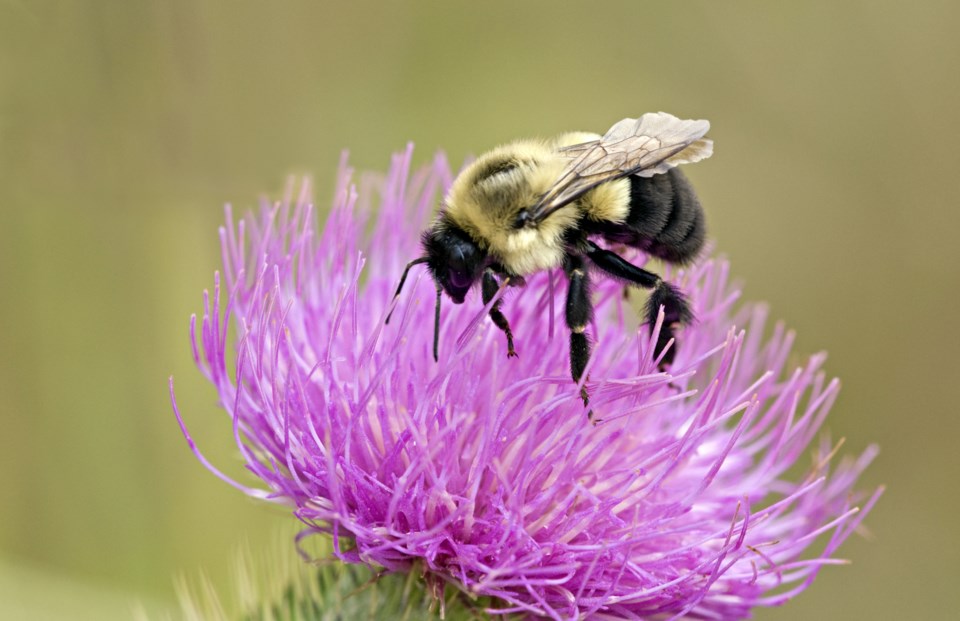Gardeners across have been growing worried over an eerie quiet settling over their gardens — a silence caused by the missing buzzing of bees.
With the increasing use of land for development and climate change worsening the bee disappearance globally, these gardeners have had to painstakingly transfer pollen grains from flower to flower with a paintbrush, simulating the .
Losing these bees and other pollinators is no mere inconvenience, but a far broader challenge that is evolving with the changes in their environment.
In a recent research paper, and I found that . While these bees have been timing their emergence to earlier spring onsets, the rest face the threat of extinction.
Early wake up call
Since the 1970’s, climate stressors including the increased rate of warming, earlier onset of spring and more unpredictable extreme weather events have added .
Bees are extremely sensitive to environmental change. The changing climate increases the likelihood of an . These flowers are essential food sources for bumblebee queens that hibernate in the winter and search for pollen and nectar after .
The survival for those emerging from hibernation before the arrival of spring flowers — their main food source — is unlikely. This leads to smaller colonies with lower odds of persisting in the following years.
However, bumblebees that sync with the changing timing of spring take full advantage of the season’s floral resources and are more likely to thrive over time.
In sync with climate change
Our research found that many native bumblebee species in North America are adapting to the changing climate by cutting their hibernation period short.
We examined the relationship between climate and bumblebee spring emergence using records from museum collections across North America. After studying 17,000 individual bees across 21 species, we found that the climate influenced the spring emergence patterns of 15 species.
Species including the Rusty-patched bumblebee (Bombus affinis) — — and the Half-black bumblebee (Bombus vagans) failed to keep up with the seasonal changes. Landscape fragmentation, pesticides and diseases from commercial bee colonies compounded these native species’ survival risk.
On the other hand, bee species like the Bombus pensylvanicus, Bombus melanopygus and Bombus huntii successfully tracked the early arrival of spring and woke up from their winter hibernation in time to feast on the early-blooming flowers.
As there are about 40 native species in North America, this research stresses the need for more research and better conservation of these economically valuable pollinators.
Who runs the world? Bees!
Like canaries in a coal mine, .
The agriculture industry, which takes up approximately , heavily relies on these pollinators to thrive. The production of coffee, kiwis, blueberries, pumpkins, tomatoes and vanilla depends on pollination by bees, while other crops like bananas .
to the Canadian economy and over to the U.S. economy.
However, the conversion of land from forests or meadows to crops and pasture and the use of pesticides is . Pesticides are deadly to bees, and agricultural monocultures fail to provide consistent food sources for pollinators throughout the spring and summer.
Our diets consist of foods pollinated by bees. If some pollinators struggle to adapt to climate changes, many of our crops will yield far less fruit and vegetables, triggering food security challenges globally.
The future of bees
Our research highlights potential concern in those species that demonstrated decline over time and inability to match changes in the climate.
Given the importance of bees to our global economy and food safety, it is good news that some bees are matching changes in spring onset between years. It is crucial that we target conservation efforts towards those species that are faring worse.
Meanwhile, policies to protect our pollinators must continue to include and the protection of natural spaces, .
Research studies like this can help policy-makers and species conservation authorities
![]()
Olga Koppel does not work for, consult, own shares in or receive funding from any company or organisation that would benefit from this article, and has disclosed no relevant affiliations beyond their academic appointment.



